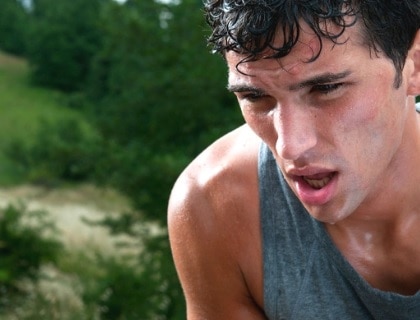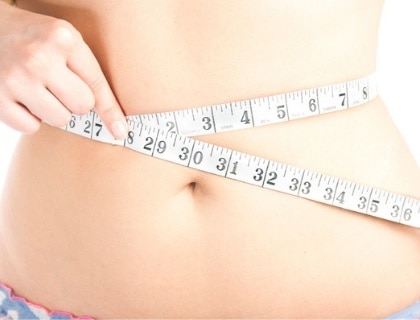Losing weight is tough, and there are any number of fad diets or workout routines claiming to be the best way to drop a few pounds fast. However, there’s a right way to lose weight, and it doesn’t happen overnight. In fact, losing weight shouldn’t even be measured by pounds but by inches, and cycling is a great way to help you achieve you goal. Why does riding a bicycle work to help you lose the fat you want to get rid of? First, you have to understand how weight loss works in general.
Calories and Weight Loss

Instead of thinking of calories as a unit of food, think of them as energy. Calories are energy we use to fuel our bodies. Consuming too many causes us to build fat and gain weight. On the flip side, a calorie deficit means we’re going to start losing weight because our bodies will burn the fat we have to make up the difference.
However, about 30 percent of what you lose through a calorie deficit when you diet is actually protein – muscle mass. This can have a negative effect in many ways, and you have to consider ways to minimize the effects while still burning off the fat, so you can lose the weight.
How Exercise Works

Exercise increases your activity level, which means you burn even more calories than usual. In other words, if you’re only eating 1400 calories a day, and you’re an average person, you probably have about a 400-calorie deficit. However, riding a bicycle for an hour can requires more energy than just sitting still, so you can burn an additional 200 – 300 calories that way.
Muscle and Metabolism
Building muscle actually does more than keep you from getting weak. It can literally help you lose the fat you want faster. How? The more muscle you have on your body, the more energy you need to keep your body going. Therefore, you burn more calories. Your metabolism is higher, and a person with a higher metabolism goes through more calories faster than someone of the same height and weight with less muscle mass.

This doesn’t mean you need to bulk up like a bodybuilder, though. In fact, doing so could lead to other problems, including high cholesterol and heart disease. Instead, continue your diet and exercise properly to maintain muscle that is leaner and healthier. Riding a bicycle is a great way to do this, since it builds longer, leaner muscles in your legs and tauter muscles in your arms, shoulders, back, and chest.
The Numbers Aren’t Going Down!

You’re doing everything right – you’re carefully counting your calories and taking in fewer than you need, you’re cycling on a regular basis, and you’re building muscle. But your weight doesn’t seem to be lessening. Why can’t you lose weight?
This is a common mistake people make that causes them to get discouraged and quit trying. Something you should understand is that you don’t necessarily need to ‘lose weight’, depending on how obese you may be. Instead, you need to ‘lose fat’, which you are likely doing. However, you’re also building muscle.
Muscle weighs more than fat. What does that mean? The tissue is thicker, so it takes a smaller portion of muscle to match the weight of a larger portion of fat. So, you may very well have lost several ‘pounds’ of fat, but you won’t see your weight drop because you’ve also built that same number of ‘pounds’ in muscle. So, how do you tell if you’re getting the job done?
Inches, Not Pounds
Especially if you’ve been riding a bicycle, walking, running, climbing stairs, and doing similar exercises to get rid of excess fat, there are better ways to measure your success, since you will be building muscle along the way. You should start by taking measurements of your body prior to beginning your new diet and exercise regimen – the circumference of your chest, stomach, and hips are usually the most telling, but you may also choose to measure your thighs, biceps, shoulders, and neck.

Once a month, rather than having a ‘weigh in’, measure again, and keep a chart to determine how many inches you’ve lost. Even when that scale doesn’t tip the way you had hoped, you’ll likely see a huge loss over the first three or four months, then slower over the next few months until you’ve completely re-contoured your body by exchanging fat for muscle.
How to Count Calories

You have to have a deficit in calories, so the first thing you need to do is use a calorie maintenance calculator to determine your ‘maintain’ amount based on age, weight, and how active you are. Then, every day that you eat less than that, you’ll be working toward losing fat. In addition, you can subtract calories based on exercise using a similar calculator. When you’ve had a deficit and/or worked out enough to add up to a deficit of 3500 calories, you’ve lost a pound.
Conclusion
Dieting and exercise aren’t easy, but when you find fun activities that help you lose weight such as riding a bicycle, you can more easily achieve a set goal. Keep in mind that varying your speed while riding a bicycle can actually help you burn more calories faster, and you’ll be well on your way to a slimmer, stronger body. Make sure you’re prepared with the right numbers, so you can count accurately and plan your bike rides to assure you get the right amount of exercise and eat enough to fuel your body throughout your weight loss diet. Eating too little can have the opposite effect, and you’ll just get discouraged.

